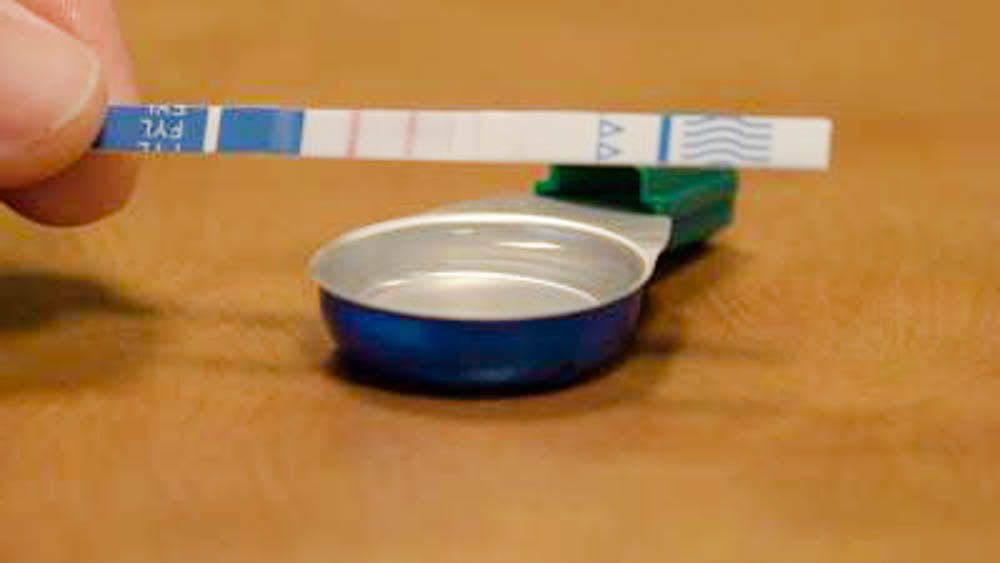University researchers found that when young adults are provided fentanyl test strips, the majority use those strips to test the purity of their drug paraphernalia and a number change their drug use habits based on those tests, according to a recent study published January in Harm Reduction Journal.
Fentanyl is a powerful opioid used in the treatment of severe pain, but other drugs laced with the opioid can lead to overdoses with potentially lethal effects.
Overdoses from contaminated drugs have become a prevalent problem across the country, and test strips can be used to determine whether other drugs are laced with fentanyl. In 2017, a team of researchers led by Brandon Marshall, an associate professor of epidemiology at the University’s School of Public Health, studied a sample of young adults in Rhode Island to test the effectiveness of fentanyl test strips in reducing the risk of drug overdose. Specifically, the researchers were looking to learn if the test strips would be used by the young adults and how it would affect their drug intake.
Recruiting for the study took a couple of months, and Jacqueline Goldman GS, a masters student at the School of Public Health, explained that recruitment mainly occurred through advertisements on Craigslist and fliers in places at which drug users are known to congregate. Since previous data had shown that the majority of overdoses in Rhode Island occur among young adults, the advertisements were targeted specifically toward adults aged between 18 and 35 who had injected any drug or used an opioid as not medically directed in the 30 days prior.
Once the participants were selected, researchers conducted an initial thirty-minute survey in which the participants were asked about their drug use history, current use and demographic information.
The participants were shown how to use the fentanyl test strips through a series of YouTube videos. For example, the test strips could be used with either urine or drug residue. When an individual uses urine to test whether they have ingested any fentanyl, they would simply need to urinate in a cup and dip the test strip in the urine for a couple of seconds. The results appear rather quickly, which makes the test strips marketable and consumer-friendly. The participants were each given ten test strips, which were covered by grant funding.
If users are testing fentanyl contamination for powdered drugs like heroin or cocaine, they must add a small amount of water to a bag and dip the strip into the solution. If the user is testing a pill, they must shave off a small part of the pill, crush it up and then add water, said Maxwell Krieger, a research assistant at the School of Public Health.
Participants were invited for a follow-up interview two or three weeks after they received their test strips. According to Goldman, 88 percent of the initial participants returned for the second visit. At this visit, the participants were asked questions approved by the Institutional Review Board about whether they had used the test strips, how the test strips were used and whether they would use the test strips in the future.
Krieger was surprised by the number of people who found the strips useful. Goldman, who conducted the interviews and wrote the manuscripts, reported that “people really liked the test strips and found them easy to use”, which is what the researchers had been hoping to see.
In addition, “the majority of people who used them changed how they used drugs,” Krieger said.
“We are already seeing the effects of this research in Rhode Island,” Krieger said. Since the study, Rhode Island has made fentanyl test strips legal and has begun distributing them.
Goldman spoke about one particular participant whose cousin was a drug dealer. The participant made her cousin test his samples, which all came back positive, so she made him dispose of all the heroin.
Though the participants were not provided with more test strips after the completion of the study, they were informed where they can find more strips.
Krieger, who grew up in Rhode Island, feels an especially personal connection to this research. As someone who had friends who have been affected by drug overdose, he shared that “it affects a lot of people on a personal level to have known people who were involved in (this) crisis.”
The researchers hope to pursue a larger study that follows more individuals over a longer period of time, Goldman said.





